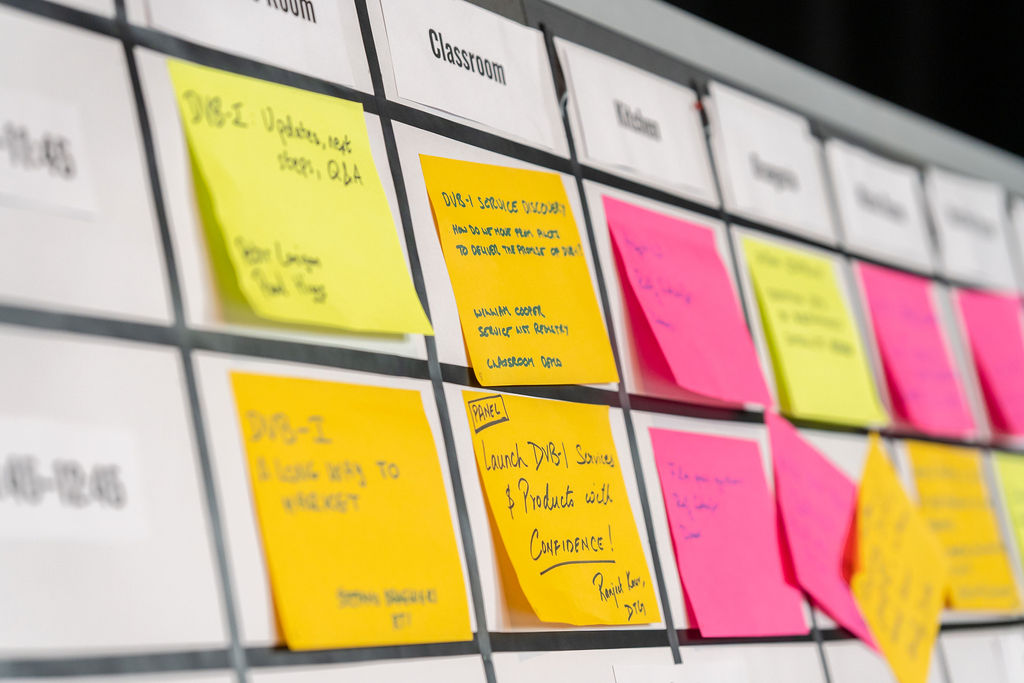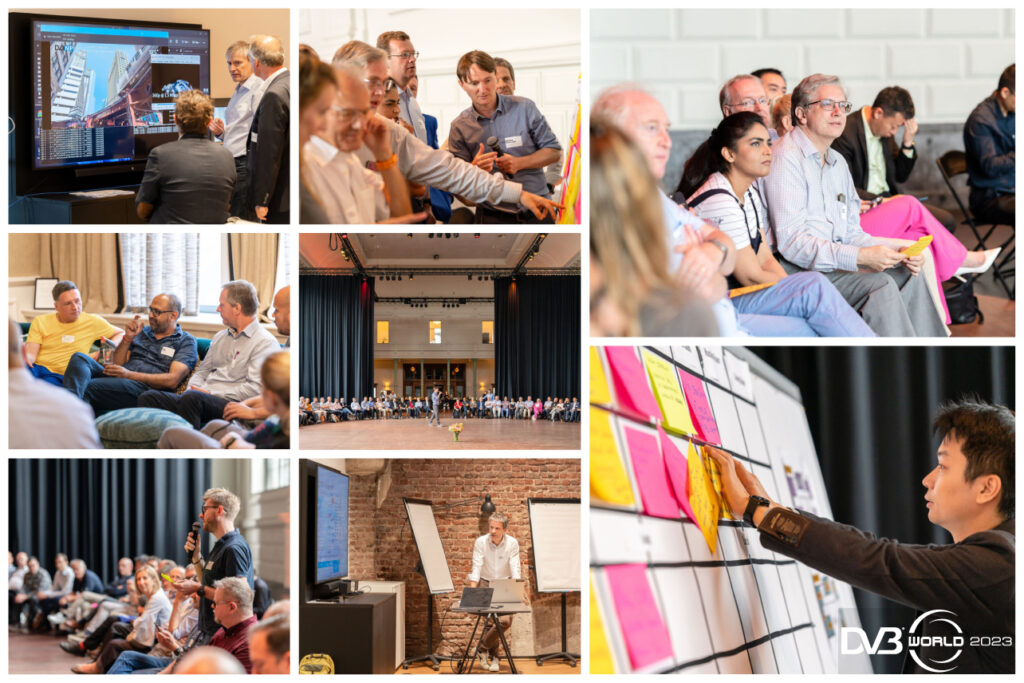With the event adopting the unconference format for the second year running, DVB World 2023 delivered an intense day of discussions on the future of media delivery in Brussels last week. Over 120 participants gathered on Thursday morning, together building an agenda that covered a broad range of topics – 36 pitches leading to 27 sessions, running in parallel blocks throughout the day.
Session hosts were encouraged to be “output-oriented” as much as possible. This meant ensuring time was given to discussing the next steps that would move a topic forward. Almost every session report (available to DVB Members and event participants) defined such next steps, which will typically result in new requests back to the relevant DVB working groups, or further research or action by those involved in the discussions.
The DVB Project Office will hold a webinar to track progress on the next steps for all sessions in 4–6 months’ time.

DVB-I dominant
DVB-I was among the most-discussed topics at the event, effectively becoming the subject of a conference within an unconference in a series of sessions. A general scene-setting overview of how the specification itself is evolving was followed by a session featuring updates from the trial and test activities in Italy, Germany and Ireland.
A session on service discovery and service lists was followed by one on accessibility features, and another on metadata preparation. The day was rounded off with a very fruitful discussion identifying barriers to DVB-I deployment and actions to drive momentum.
Progress on other DVB solutions
Another set of sessions focused on other existing DVB specifications and explored ways of increasing their deployment. Topics discussed included the extent to which DVB Native IP might help broadcast operators close the gap on OTT services, effective ways of getting more UHD HDR (high dynamic range) content into homes, and the challenge of encouraging uptake of DVB’s Targeted Advertising specifications.
There was also a session on how DVB-SIS (Single Illumination System) might gain more market traction if there were a renewed focus on verification and validation (V&V) as a means of easing deployment.
New technologies and trends
Wider industry trends inspired several sessions, with participants exploring where there might be some new standardization work for the DVB Project to undertake across a diverse range of topics. One session, for example, asked what might be needed beyond existing DRM (digital rights management) solutions for OTT content; another discussed whether open caching technology could have a role to play in DVB-MABR and DVB-NIP; and several other sessions looked at new user experience technologies such as film grain synthesis, haptics and volumetric video.
Other topics appearing on the agenda included sustainability – and specifically the contribution that “good enough content” and “good enough delivery” can make, as well as the potential conflict with the goal of resilience – and questions around fragmentation in global standards and the potential for finding more commonalities.
Looking inward
Finally, some of those most active in the running of the DVB Project took the opportunity to canvas opinions and inputs, including from non-members, on how the organization can evolve for the better. This included, for example, a session on how to get more involvement in DVB activities from younger generations and another on how the organization’s promotional budget can be best allocated to ensure better awareness and understanding of DVB specifications. There were also discussions on reference tools and test content that could be made available to implementers.
The day was rounded off with a “closing circle”, where every session host gave a brief summary of their session and what they expected will happen next. A report has been filed on every session and is available to DVB World 2023 attendees and to DVB Members via the Unconference Hub.

